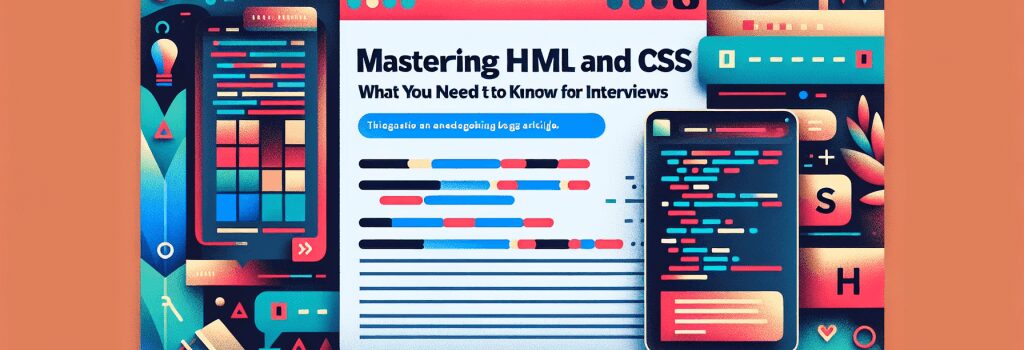Mastering HTML and CSS: What You Need to Know for Interviews

Introduction to Mastering HTML and CSS for Interviews
When embarking on a career as a web developer, mastering HTML (HyperText Markup Language) and CSS (Cascading Style Sheets) is foundational. These technologies are the backbone of the internet, responsible for the structure and design of web pages. With a solid understanding of HTML and CSS, aspiring web developers can create visually appealing, efficiently coded websites. This expertise not only enhances your portfolio but is also critical during the interview process for web developer positions.
Understanding the Importance of HTML and CSS
HTML: The Structure of the Web
HTML is the standard markup language used to create and design web pages. It provides the basic structure of sites, which is then enhanced and modified by other technologies like CSS and JavaScript. For interviews, you should understand the various elements, attributes, and their proper semantics. This knowledge signifies your ability to build accessible and SEO-friendly websites.
CSS: Styling the Web
CSS is used to control the layout of web pages. It allows you to design engaging, responsive designs that can adapt to different screen sizes, making your websites accessible across various devices. Knowing how to efficiently use selectors, properties, and media queries is essential for creating modern, stylish websites. Interviewers often look for candidates who can demonstrate a deep understanding of CSS principles such as the box model, flexbox, and grid systems.
Key Areas to Focus on for Interviews
Responsive Design and Media Queries
In today’s mobile-first world, understanding responsive design is non-negotiable. You should be comfortable using CSS media queries to create designs that adapt to different screen sizes and orientations. This skill will be tested in both technical assessments and project discussions during interviews.
Semantic HTML and Accessibility
Using semantic HTML tags not only helps with SEO but also ensures your websites are accessible to all users, including those using screen readers. Demonstrating a commitment to accessibility shows interviewers that you design with all users in mind, a critical skill in web development today.
CSS Layouts: Flexbox and Grid
CSS Flexbox and Grid have changed the landscape of web design, making it easier to create complex layouts. Understanding these tools and when to use them is crucial. Be prepared to solve layout challenges during technical assessments, showcasing your ability to use these powerful CSS modules efficiently.
CSS Preprocessors
While not always required, knowledge of CSS preprocessors like Sass or Less can set you apart. These tools introduce variables, mixins, and nested syntax to CSS, making your stylesheets more manageable and maintainable.
Practicing for Technical Assessments
Building projects from scratch is one of the best ways to prepare for technical assessments. Focus on creating a diverse portfolio that showcases your skills in HTML and CSS, including responsive design, various layouts, and use of preprocessors. Additionally, participate in coding challenges on platforms like CodePen or Frontend Mentor to hone your problem-solving skills in a timed environment.
Conclusion
Mastering HTML and CSS is foundational for anyone looking to become a web developer. These technologies not only form the basis of the web but also play a crucial role in interviews and technical assessments. By focusing on responsive design, semantic HTML, CSS layouts, and preprocessors, you can demonstrate your expertise and readiness for a career in web development. Remember, hands-on practice and building a diverse portfolio are key to showcasing your skills and impressing potential employers.


